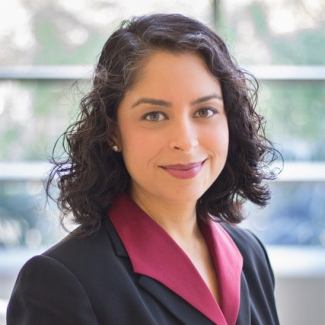
Why Language Matters for Diversity, Equity, and Inclusion
Language matters. How we talk and write about even mundane topics adds context and framing to any discussion. The importance of language is even more critical when navigating sensitive topics, including those involving race, ethnicity, gender, sexual orientation, and gender identity. Engaging in these diversity discussions also provides an opportunity to display the fluidity of language in action — the ways in which terms evolve and groups choose new ways to self-identify.
As I have previously written , identity and language are both “socially constructed and fluid — constantly changing, shifting, and evolving.” Lesbians reclaimed the term dyke
just as those in the disabled community draw attention to crip (PDF) and Black youth redirected the N-word
to signal power and pride. In these and other instances, the terms used are critical for the groups involved. Carefully selecting and using proper monikers does more than identify particular groups; it also signals pride in identity (when used by those from within the group) and respect for identity (when used by outsiders).
With this in mind, LSAC recently convened an Advisory Group on Diversity, Equity, and Inclusion (DEI) Categories (of which I am the Chair) to review how and where LSAC collects data on candidates’ identities. Through a series of ongoing conversations, review of materials, and collective drafting of content, this national group of DEI experts offered advice on the terms LSAC should use for data collection to not only gather valid and reliable data, but also show respect to individuals from different identity backgrounds — with specific attention to groups that are often marginalized or overlooked.
Being careful in our language usage is especially critical today, when many in American society are not simply embracing diversity but promoting antiracism. As scholar Ibram X. Kendi writes in his pathbreaking book, How to Be an Antiracist , “[T]here is no neutrality in the racism struggle.” Instead, each person picks sides: “One either allows racial inequities to persevere, as a racist, or confronts racial inequities, as an antiracist.” In other words, staying neutral — maintaining the status quo when faced with the need for change — perpetuates inequality. Many scholars have written directly and cogently about language and identity
, making clear that supporting the evolution of vocabulary is critical to antiracism, and that changing terminology is part of the fluid structure of racism and antiracism both. It is therefore imperative that we assess our language and consider revisions.
Unity and allyship are also key foundational criteria in the effort toward antiracism. Unity between groups is critical for the groups themselves. While ethnic and national identities are important identity markers, there are significant political benefits that come from grouping together with others from similar (though not the same) background. What is often referred to in the U.S. as the Asian American community — a group comprised of people with ancestors from any part of Asia — is an excellent example. There is significant diversity within the Asian American population , originating with national origin and ethnicity. Varying group access to resources, English fluency, education, and other opportunities have real effects on the outcomes of different populations. A recent publication (PDF) from the Law School Survey of Student Engagement
provides examples of this diversity in the American law school context:
- While 81% of Indian American law students have at least one parent who earned a college degree, only 41% of Vietnamese American students do.
- A majority (51%) of Filipino American law students graduate with over $120,000 in student debt, compared to only 15% of those who are ethnically Chinese.
These Asian American groups followed different pathways to the U.S. with resulting disparities in opportunities and outcomes; yet, they find unity under one umbrella. Asian Americans have banded together (and also joined under the people of color umbrella ) to fight for the rights of immigrants, be seen as fully American rather than foreign, and otherwise build political power to support joint efforts; this unity is something wholly American and comes in spite of centuries of conflict between their home countries. They deserve to be counted as Asian American as well as identifying their ethnic origins.
Allies are vital too. Allies must recognize and respect the interest in groups evolving their own identities and how they refer to themselves — for instance, from Colored to Negro to African American and Black. Community partners should defer to group priorities and preferences in their own identity and naming. LSAC is doing exactly this through the Advisory Group on DEI Categories, encouraging each expert to share their own research and experiences on language and identity. By synthesizing that advice and drawing from it to craft new categories, LSAC is not only honoring community identity preferences but also prioritizing terms that are correct, respectful, and inclusive.

